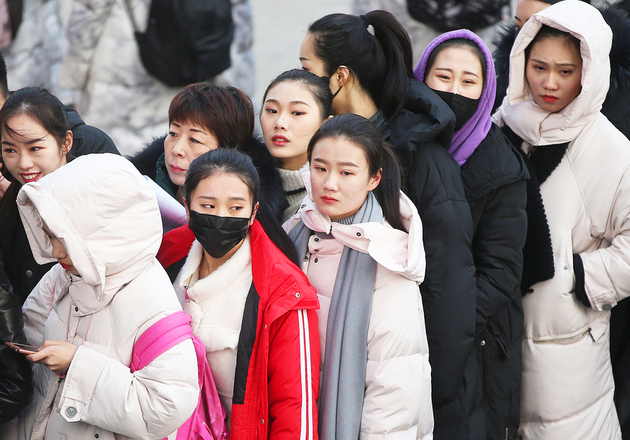
Photo/VCG
Apr. 3 (NBD) -- The college entrance examination for art students this year has kicked off and the number of participants hit a new high. As competitions remain fierce, the acceptance rate of the acting department of Communication University of China even reached 327:1, statistics said.
The frenzy over art entrance examinations pushes China's art training market to boom. NBD noticed that art training service market stood at 41.6 billion yuan (6.6 billion U.S. dollars) in size last year and it is expected to achieve a five-year-growth-rate of 9.06 percent from 2015 to 2020, according to research data provided by the securities company Founder Securities.
Training centers scrambling for students
China's education industry now is occupied by a large number of small training centers. According to Founder Securities, XDF.CN and Tomorrow Advancing Life, the two largest education enterprises, take up a total market share of no more than 10 percent.
As one of the sub-market of education market, the art training market now also has numerous small training institutions but no big player exist, Chen Chen, one of the founders of Palace Education, a typical online training organization dedicated to preparing students for directing and theatrical production, told NBD.
Data shows that most of the art training institutions have the turnover of less than 5 million yuan (795,760 U.S. dollars) with under 50 full-time employees.
For those training centers in larger scale, the rising costs have brought big pressure to the institutions and they may face operating risks if the number of enrolled students can't reach a certain level.
In order to enroll more students, some training providers compete with each other through "buying" students from high schools, which goes against the fundamental goal of education, said Zhao Lijun, president of Beijing WuZuoRen Fine Arts School.
Some other training schools said to NBD in the interviews that it has been a hidden rule in the industry to give commission to high school teachers who help introduce students. In general, the commission would be 40 to 50 percent of training course fees. But some organizations even give away all their fees and they can only make profits from the accommodation and food costs, added Zhao.
The training industry is to reshuffle
The art training industry will go through a reshuffle in the coming two years, according to Chen. With the growing number of students, many training centers began to offer targeted courses, such as acting, music, and drawing. However, there is no one that matches the size of XDF.CN.
Founder Securities said that the core competence of training institutions lies in branding and channel resources. As there is no industry giant, channel resources become more important. Traditional training centers have their own ways of attracting students, such as establishing cooperation with high schools and colleges.
After more than a decade of development, regional giants have emerged with the help of channel resources.
Aiyi Hema is the largest training organization for fine arts in China in terms of the number of students. Zhang Bo, CFO of Aiyi Hema, said the company's dominance in Southwest China is largely reliant on the influence of Sichuan Fine Arts Institute and 70 percent of its students come from Chongqing and Sichuan.
However, Aiyi Hema only takes up about 2 percent of market share, Zhang added. At present, the development goal for regional giants is to build leading brands and open nation-wide chain stores. However, it is not that easy.
Industry integration would be a trend, and regional giants will continue to explore the regional market further, said a senior art training insider.
Email: tanyuhan@nbd.com.cn


 川公网安备 51019002001991号
川公网安备 51019002001991号





